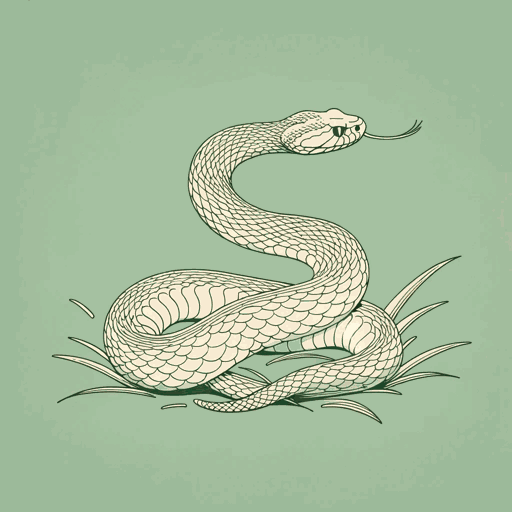50 pages • 1 hour read
George R. StewartEarth Abides
Fiction | Novel | Adult | Published in 1949A modern alternative to SparkNotes and CliffsNotes, SuperSummary offers high-quality Study Guides with detailed chapter summaries and analysis of major themes, characters, and more.
Summary and Study Guide
Overview
Earth Abides, by George R. Stewart, was originally published in 1949. The novel was one of the first of the post-apocalyptic science-fiction genre and a direct inspiration for Stephen King’s 1978 dark-fantasy novel The Stand.
Stewart’s novel is unique given its historical context. Written during the early years of the Cold War when the threat of nuclear annihilation loomed in the American mind, the narrative portrays a world devastated not by bombs but by microscopic organisms—a landscape populated not by mutants or zombies but by graduate students, carpenters, and average people trying to survive in a world that has left them adrift. Earth Abides won the International Fantasy Award (1951) and appeared on Locust Magazine’s list of Best Science Fiction.
Content Warning: Earth Abides depicts the threat of sexual assault as well as a character’s ableist language and bias.
Plot Summary
The novel opens in the 1940s. While working on his graduate thesis in geography in an isolated location, Isherwood “Ish” Williams finds himself bitten by a rattlesnake. With no hospital nearby, he nurses the wound himself in his remote cabin. He survives, but he emerges from his isolation to a world devastated by an unknown pandemic. Retreating to his parents’ house in the Bay Area, he finds only a few random survivors. He grapples with the grief and uncertainty of being one of the last members of the human race. Eventually, he decides to seek out other survivors, so he drives east, encountering scattered groups here and there (but none he wants to associate with or who want to accompany him). He reaches New York where he meets a man and a woman holed up in a spacious apartment, drinking cocktails as if the world has become one big happy hour. Ish realizes he cannot stay—the lack of heating oil will make New York’s winter deadly—but the couple remains.
Back on the West Coast, he sees a light burning in a house one evening. Accompanied by his adopted dog, Princess, he investigates and encounters Emma, a woman 10 years his senior. Ish feels a connection with her, and she moves in with him. Soon, a romantic relationship develops, and Emma gives birth to Jack, the first of several children. In time, they meet Ezra, who brings back other survivors: his two wives, Molly and Jean; George and Maurine; and Evie, a young girl with an intellectual disability. Together, they form an ad hoc community—the “Tribe”—and begin procreating to repopulate the devastated planet.
Years pass, and the Tribe grows to 36 members. They live peacefully, commemorating the years by marking them on a rock, but Ish is concerned that they are too negligent in preparing for their future. When an aqueduct bursts, leaving them with no running water, Ish argues that they must be more proactive. They dig a well for fresh water and construct outhouses, Ish teaches the children, and lastly, he sends the two eldest boys, Richard and Robert, on a cross-country journey to look for other communities. In the meantime, he dotes on his youngest son, Joey, the only child who exhibits a “creative spark.” Ish imagines him as the Tribe’s future leader, the great savior who will rebuild civilization.
Months later, Richard and Robert return, and they bring another survivor, Charlie. While Charlie charms most of the group, Ish and Ezra are wary. Their suspicions are confirmed when Charlie boasts to Ezra that he carries several sexually transmitted infections (the Tribe has thus far remained relatively free of infectious illness). Later, Ish finds Charlie making sexual advances toward Evie. Fearing she might get pregnant and pass on her disability to her children, Ish orders Charlie to stay away from her. He refuses, and the group is confronted with its first test—how to deal with a law-and-order crisis. They decide that Charlie is too great a threat to simply banish him from the group. They vote to execute him and hang him from a tree.
Shortly afterward, typhoid sweeps through the Tribe, and five children die, including Joey. Bereft, Ish questions all of his grand plans to rebuild society, wondering if the death is divine punishment for killing Charlie. He even wonders if his beloved university library, his sanctuary for decades, is of any use anymore. Ish resolves to give up his regimented schedule of academics and his obsessive worrying about the future. He crafts a rudimentary bow and arrow and shows the children how to shoot, hoping he has planted a seed of future survivalism.
Years pass, Tribe members die, and younger members mature and have children of their own. Ish, now the only surviving member of the original Tribe, lives in a haze. He is a respected elder, and his great-grandson, Jack, cares for him. When a wildfire sweeps through the neighborhood, Jack and his friends lead Ish to safety. Now near death, he observes the Tribe living more “primitively,” wearing animal skins and hunting with bows rather than guns. He sees humanity’s inevitable retreat from the “Old Times” to a new relationship with the natural world. As he lies dying on the Bay Bridge, he looks out at the hills of the East Bay, finally understanding that all the great works of the human race are dust compared to the permanence of the Earth.


